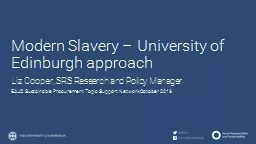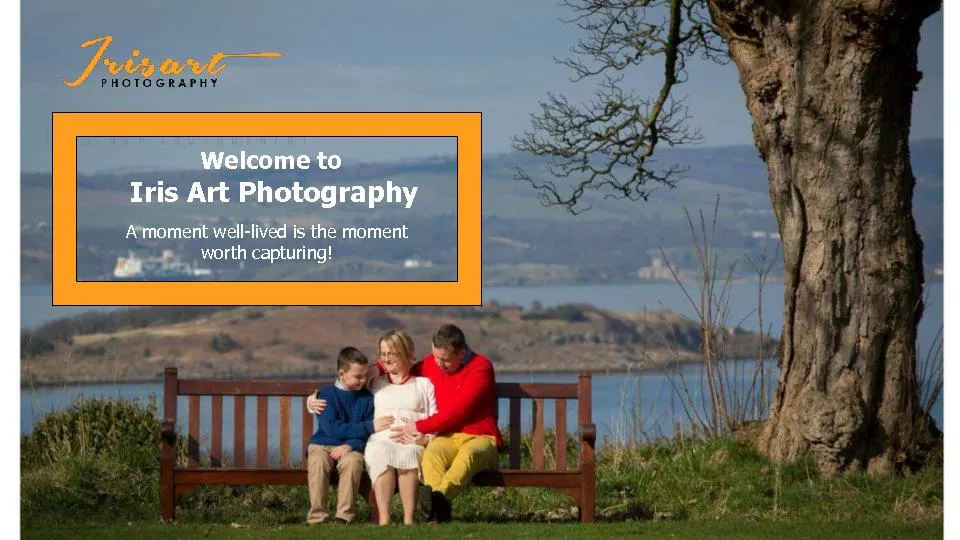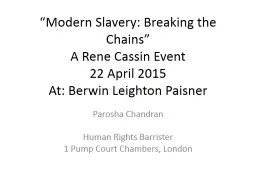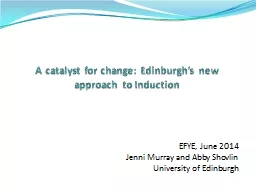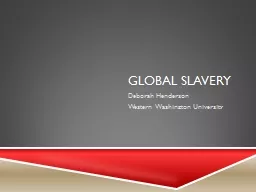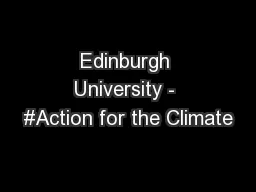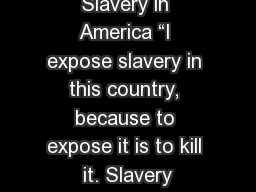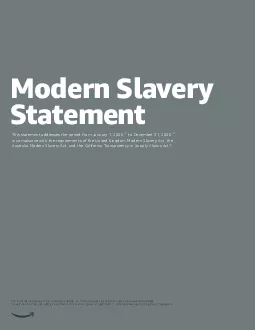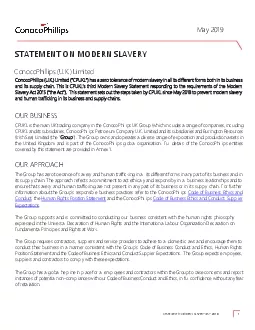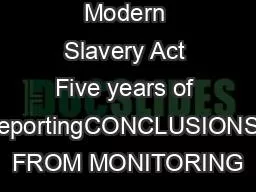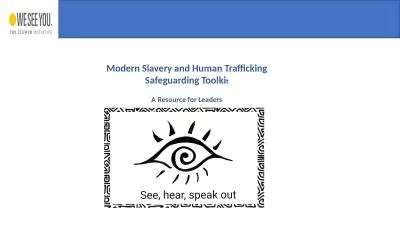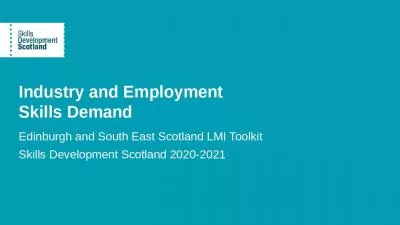PPT-Modern Slavery – University of Edinburgh approach
Author : lois-ondreau | Published Date : 2017-06-12
Liz Cooper SRS Research and Policy Manager EAUC Sustainable Procurement Topic Support Network October 2016 Working areas Why modern slavery Increasing visibility
Presentation Embed Code
Download Presentation
Download Presentation The PPT/PDF document "Modern Slavery – University of Edinbur..." is the property of its rightful owner. Permission is granted to download and print the materials on this website for personal, non-commercial use only, and to display it on your personal computer provided you do not modify the materials and that you retain all copyright notices contained in the materials. By downloading content from our website, you accept the terms of this agreement.
Modern Slavery – University of Edinburgh approach: Transcript
Download Rules Of Document
"Modern Slavery – University of Edinburgh approach"The content belongs to its owner. You may download and print it for personal use, without modification, and keep all copyright notices. By downloading, you agree to these terms.
Related Documents

